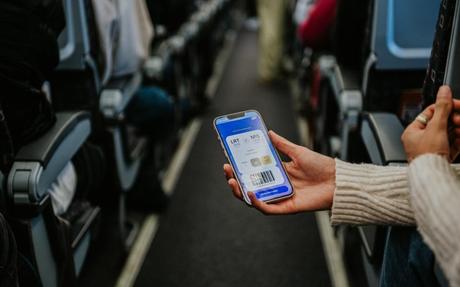
Strikes, illness and bad weather have plagued British air travel in recent years. And now the Civil Aviation Authority, Britain's industry regulator, has announced it is increasing air traffic control costs - ostensibly to alleviate these problems.
The levy is paid by the airlines to the National Air Traffic Services (Nats) for its air traffic control capabilities. The fee will rise from £47 to £64 per flight until 2027, equating to an average increase of £43p per passenger to £2.08.
Admittedly, it does not involve large amounts. But the fee is one of many costs that make up a typical airline ticket, with fuel costs, government taxes and security fees all contributing to the final price.
By law, all these unavoidable costs must be advertised as part of the ticket - meaning the price you see must be the price you pay. But airlines do have some discretion and can charge variable additional amounts.
Air passenger duty
However, some have been resolved. Air passenger tax was increased earlier this year, meaning the government will tax most short-haul flights carrying economy passengers at £13 each. On long distances the amount rises to £87, or £91 for journeys over 5,500 miles long.
Fares for premium economy, business class and first class passengers are significantly higher: for example, the most expensive seats on the longest flights include £601 in APD. However, the changes earlier this year made domestic flights slightly cheaper, with the tax halved from £13 to £6.50 per passenger.
Fuel costs
Then there is the fuel tax, often referred to as a "Carrier Imposed Charge". These were first introduced by airlines in 2004, when the price of oil soared to $40 (£22.32 in 2004) per barrel. This stabilized, but for some airlines the costs have remained.
This year, the IATA reports, fuel represents 28 percent of an airline's costs, although this fluctuates widely. In some countries, such as Australia, New Zealand and Hong Kong, fees are highly regulated, meaning the costs cannot be fully passed on to the customer.
The story continues
This is not the case in Britain. For example, if we take a British Airways flight from London to Barcelona, the cost for travelers in Great Britain is just under three percent of the ticket price. Some budget airlines, such as easyJet, do not include this in their fares.
However, there are no taxes on aviation fuel in Britain for airlines themselves, unlike the fuel used by almost every other form of transport. There is also no VAT on airline tickets (unless you fly with a private jet).
Airport charges
That's not all: your ticket may also include travel-specific costs. A Passenger Service Charge covers the amount that airports charge airlines for the use of their services. In the case of the Barcelona example, this will be £23.18 (or 16 percent) of the final amount. This number varies, somewhat controversially, between airports. Earlier this year, Heathrow was forced to cut landing charges from £31.57 per passenger to £25.43 from next year, after a years-long row.
As with many elements of air travel, the distribution of costs also changed after September 11. Insurance and security charges were imposed after 2001 to account for the additional processes involved in flying, and these too vary by airline. These are more common on routes operated by US airlines, but may be charged by UK airlines if clearly stated on the label, according to IATA.
The "last rate"
Even after these costs, the remaining amount is not entirely a profit. It is estimated that labor represents approximately one-third of an airline's operating costs, making up the largest overhead costs next to fuel. Smaller charges, such as the Nats fee, will likely be factored into the final 'fare' on a ticket, rather than listed separately as taxes are.
Figures from the U.S. Department of Transportation can be used to estimate how much each element of air travel costs. About two-thirds of the "final rate" is spent on personnel and fuel. Leasing and owning aircraft eats up six percent of the ticket price; much the same applies to non-aircraft assets such as hangars and offices. The costs of free drinks, landing fees, maintenance, insurance and advertising all take up a smaller portion. And these figures don't include government fares, which, as the sample ticket from BA flights to New York shows, add more than £100.
These figures obviously only apply to US airlines and are averages, but provide insight into how our ticket prices are spent in addition to mandatory fees.
The profit
As for the bottom line? According to the International Air Transport Association, airlines in Europe take home an average of $4.36 (£3.60) per passenger, and $9.53 (£7.87) in the US. Globally, the average profit margin is just $2.25 (£1.86) per passenger.
This final amount does not take additional profits into account. Ancillary costs, from seat fares to inflight sandwiches, make up a large portion of the money airlines make. In May it was reported that Ryanair makes around £20 from the average passenger, largely through smaller purchases such as seat reservations and snacks.
It's worth noting that the final price of a ticket can also change. If the "unavoidable costs" are reduced by the government at any time after purchase, there may be an option to claim a refund (although again this varies by operator).
Unfortunately, the reverse also applies: even if there is a substantial increase, you may have to pay the new amount. Either way, in Britain the extra cost must always be advertised as part of the ticket price - so there should be no surprises.
